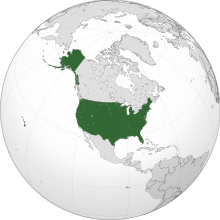Intersex rights in the United States
| Intersex rights in the United States | |
|---|---|

|
|
| Prohibition of non-consensual medical interventions? | No |
| Reparations? | No |
| Anti-discrimination protection | In healthcare |
| Access to same rights as other men and women | No |
| Changing M/F identification documents | Varies |
| Third gender or sex classifications | Varies |
| Marriage | Yes |
| Rights by country | |
|
|
|
|
Intersex people in the United States have some of the same rights as other people, but with significant gaps, particularly in protection from non-consensual cosmetic medical interventions and violence, and protection from discrimination. Actions by intersex civil society organizations aim to eliminate harmful practices, promote social acceptance, and equality. In recent years, intersex activists have also secured some forms of legal recognition.
Early accounts of intersex people in North America include those of English immigrant Thomas(ine) Hall, in 17th-century colonial Virginia and 19th-century African-American Connecticut intersex man Levi Suydam, pronounced male and so eligible to vote. Early common law, like canon law, held that hermaphrodites were to be treated as male or female depending on the prevailing sex.
The U.S. intersex movement developed in the 1990s and 2000s, through the establishment of the Intersex Society of North America (ISNA) and the AIS Support Group USA (now called AISDSD) in the 1990s, and Advocates for Informed Choice (now interACT), Bodies Like Ours, Intersex Initiative, and Organisation Intersex International, (now locally known as the Intersex Campaign for Equality) in the following decade.
The Intersex Society of North America (ISNA) was a non-profit advocacy group founded in 1993 by Cheryl Chase to end shame, secrecy, and unwanted genital surgeries. Amongst other activities, it published the journal Hermaphrodites with Attitude.
...
Wikipedia
